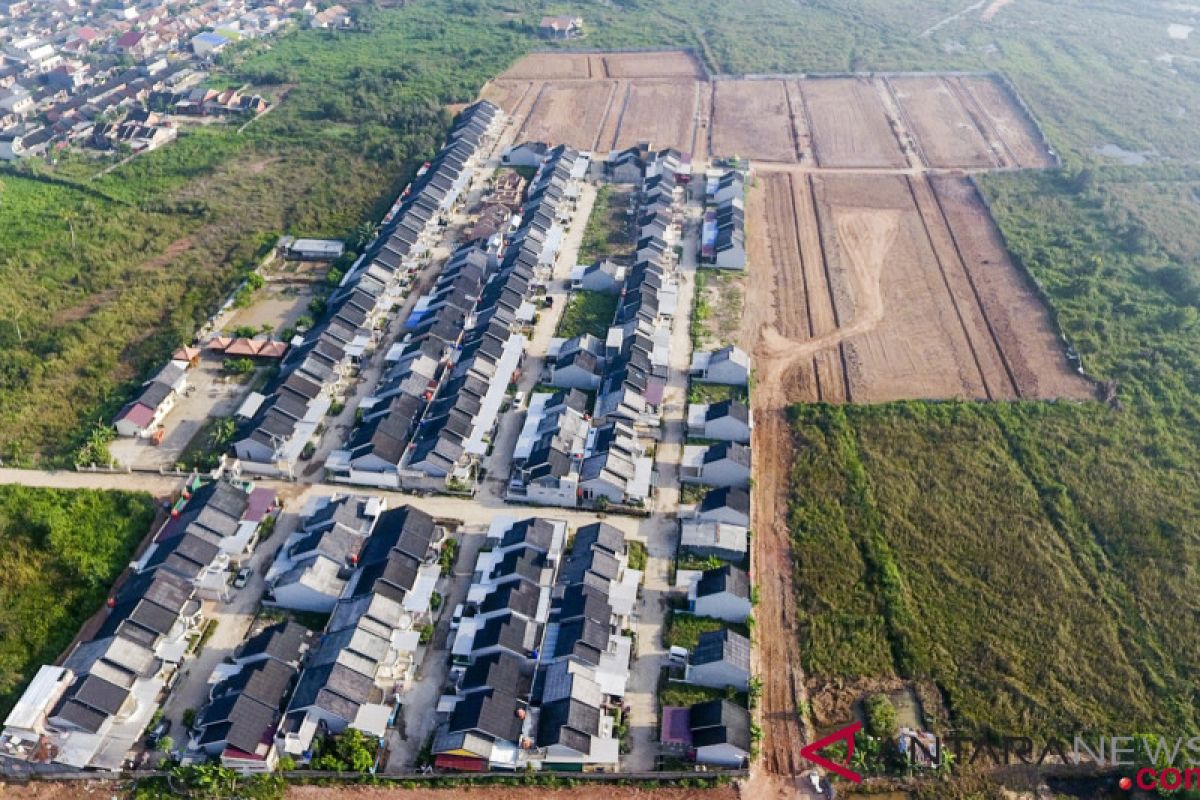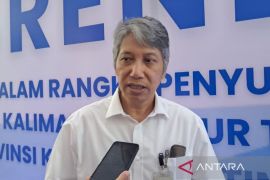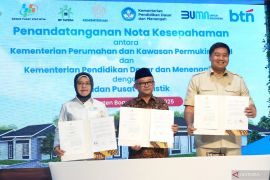Hence, the government should prepare strategic steps to meet the housing target. The one million house program, as proclaimed by President Joko Widodo (Jokowi) in 2015, is expected to be met, among others, with the assistance of a number of digital technology innovations prepared by the Ministry of Public Works and Public Housing (PUPR).
"PUPR supports disruptive technology to improve services in the housing sector and to make the process faster, better and cheaper," said Secretary General of the Ministry of PUPR Anita Firmanti, in a written statement received in Jakarta on Thursday (Oct 25).
According to Firmanti, disruptive technologies are expected to support the achievement of the one million house development program launched by President Jokowi to gradually reduce the shortage of housing in Indonesia.
One of the innovations that are needed to make this happen is information technology that supports the efficiency of the housing market based on information on housing demands.
In addition, digital technology is also considered to be able to improve supply chain efficiency in the housing development process.
The government is developing an integrated digital information system to meet people`s needs for housing information. Through this information system, it is also hoped that it can curb housing providers who do not comply with the rules and tools to analyze housing price fluctuations.
The Ministry of PUPR has also made a number of other efforts to boost the implementation of the one million houses program, such as research and development on the use of new technologies, the development of material technology, creative housing financing, such as micro-credit, and Tapera (Public Housing Savings).
Acting Director General of the Ministry of Public Housing PUPR Finance Khalawi Abdul Hamid in Jakarta, Monday (Oct 22) said he believed that with support, such as from the Tapera program, meeting the goals will be reached faster.
Tapera is a tool to manage public funds together, and help each other in providing long-term funds to meet the needs of participants to purchase decent and affordable housing.
Meanwhile, housing observer Ruslan Prijadi wants the government to put Tapera`s budget into the state budget, although the capacity of the state budget is limited.
Prijadi, who is also a lecturer at the University of Indonesia (UI)`s Faculty of Economics and Business, noted a number of challenges faced by Tapera, among others, in terms of prospective participants` data, refusal of participants` employers, lack of support from the local government, as well as issues of low success in potential mobilization of funds.
The Ministry of PUPR has also made other efforts to encourage the One Million Houses Program, such as research on the use of new technologies, the development of material technologies, and creative housing financing, such as micro-credit, and Tapera (Public Housing Savings).
Besides digital technology innovations, the building of one million houses could also be accelerated by a synergy of all sides. Good synergy from various parties is important in order to realize the one million houses program, so that various groups, especially low-income people, can also achieve their dreams of owning a home.
According to director general Abdul Hamid, with digital technology innovations and good synergy, the target to build one million houses could even be exceeded.
The government launched the one million houses development scheme in 2015. Yet it always failed to achieve the target.
In 2015, it only developed 699,770 units, while in 2016, it built 765,120 houses.
The Public Works and Public Housing Ministry acknowledged that it had fallen short of its target to build one million housing per year.
"Yes, we have not reached the target. The realization reached only 904,758 units in 2017, including 70 percent of the homes for low-income people (MBR) and 30 percent for non-MBR," Director General Abdul Hamid told reporters in Jakarta early this year.
The program was launched to reduce the backlog of 7.6 million units, which grows by 800 thousand units per year. Based on data from the Central Bureau of Statistics (BPS) and the National Development Planning Board (Bappenas), there were 13.5 million homeless families in 2014.
This statistics means that there are 5.9 million families who rent homes . In the meantime, among already existing houses, some 3.4 million houses are still unsuitable for living.
Hence, the Indonesian government is developing houses every year under this program to provide 603,516 shelters to the country`s MBR, and 396,464 others to non-MBR families.
Editing by Yoseph Hariyadi
Reporter: Andi Abdussalam
Editor: Andi Abdussalam
Copyright © ANTARA 2018












